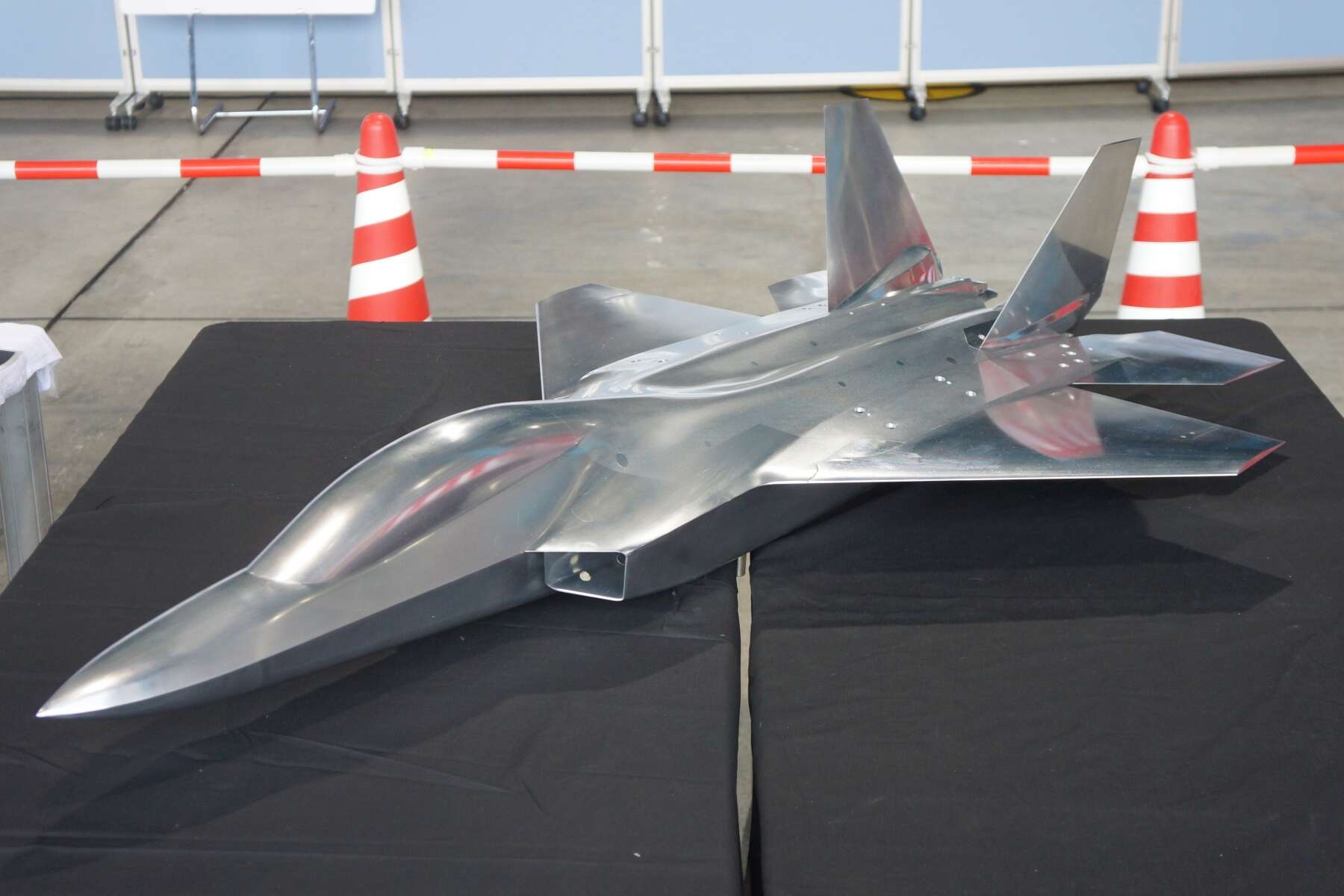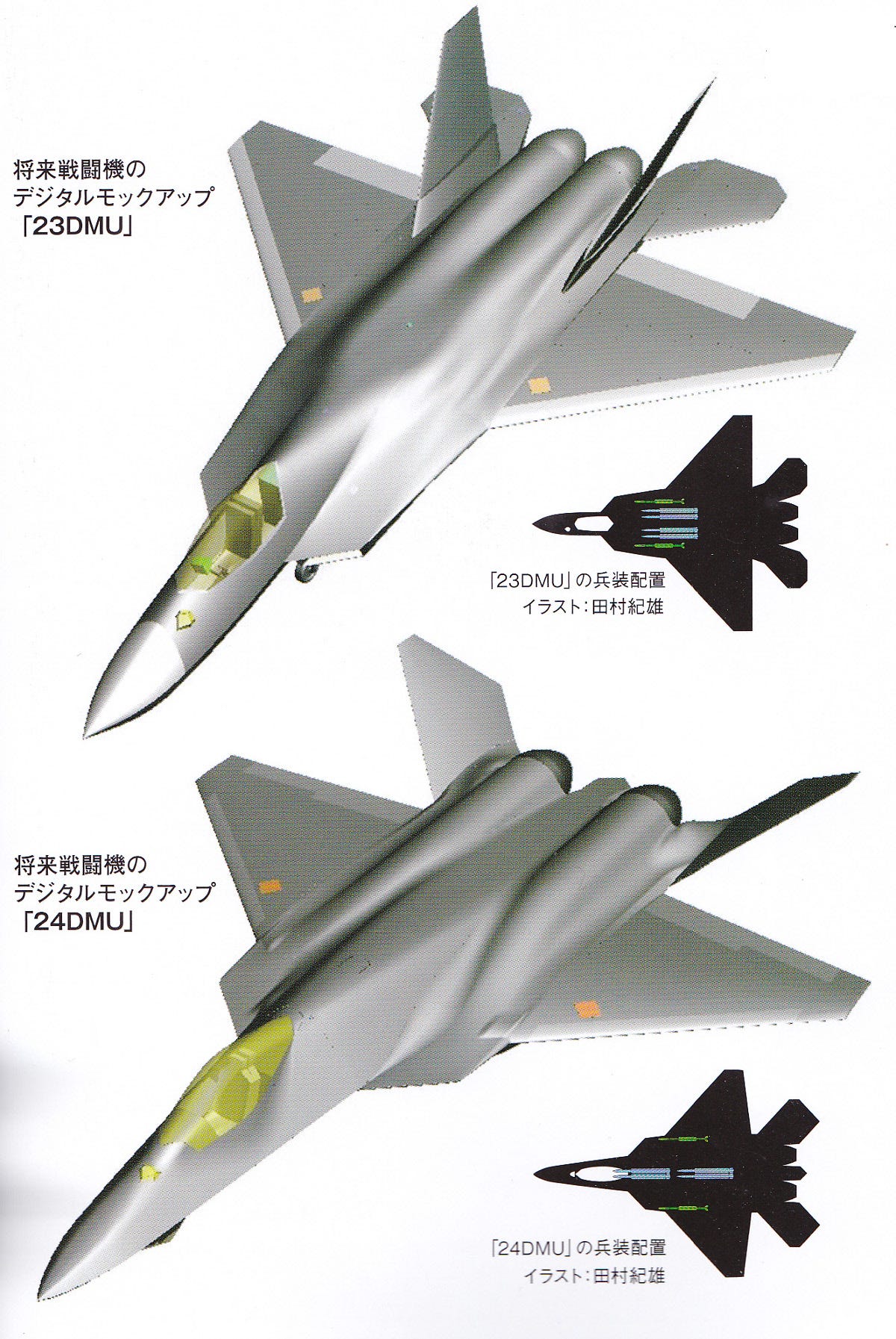F 3 Fighter - The F-X (unofficially designated F-X) is a sixth-generation fighter under development for the Japan Air Self-Defense Force (JASDF). It will be Japan's first advanced fighter jet.
The F-X was developed to rival the world's best jet fighter, the US Air Force's Lockheed Martin F-22 Raptor, and the Japanese counterpart.
F 3 Fighter

The F-X program began when the United States banned exports of the Lockheed Martin F-22 Raptor as part of 1997 reforms to protect its technology. With Japan no longer able to afford the F-22, the domestically developed fighter was chosen to replace Japan's aging fighter jets. Between December 2009 and August 2010, the Ministry of Defense (MID) studied the development of the Barkat aircraft to replace the F-2. The study conducted called for a new fighter jet that would be a generation from the modern fifth generation fighter. The concept fighter is named i3 Fighter (Intelligence, Agility, Flexibility). Some of the technologies and capabilities of the combat concept should include advanced radar systems to counter the stealth technologies of other combatants, receive target information from other platforms (drones, fighters and/or early warning and control aircraft). , uses flight to optics. (such as powerful information technology) for data processing, stealth technology, gallium nitride semiconductor to improve radar performance.
File:a Typhoon F2 Fighter Aircraft (top) From 11 Squadron, Raf Coningsby In Close Formation With A Tornado F3 Mod 45147962.jpg
As part of Japan's advanced weapons program, the Ministry of Defense planned to fully develop the F-X stealth aircraft using information from the X-2 Shenzhen test.
There is no specific information about the F-3 yet. However, the F-3 is said to be a sixth-generation fighter, a generation based on the JASDF's Mitsubishi F-15J and Mitsubishi F-2, the Mitsubishi X-2 Shinshin data and the USFJ as a base. uses Start progressing. It will have high speed with super cruise capability, 3-D vectoring, advanced stealth capability and carrier capability. As the first fighter created after the transition, the developers gave it the name Type 0 fighter, which was picked up by journalists and became "the development of the new type 0 fighter", and now civilians simply call it the fighter. zero warrior It is planned to be launched after six years. Key takeaway: Tokyo wants a new fighter that can do things the F-35 can't. Depending on how it works, it can be a deadly enemy.
In February 2019, Japan announced its decision to continue developing an indigenous stealth fighter jet. This happened against the background of the decision to buy more than 100 American F-35 aircraft and to cancel the Japanese X-2 fighter prototype in 2018.
Japan's Ministry of Defense has announced the development of a new fighter jet, now called the F-3 fighter, or part of its Medium Term Defense Program (MTDP), which is part of the modernization of the Japan Defense Forces (JSDF). and determine procurement decisions. The next ten years.
Netizens Wage Photoshop War On Japan's F 3 Stealth Fighter
Adding a new fighter to Japan's MTDP is surprising, but not out of character. The latest revision of the MTDP increases defense spending in response to what Japan sees as a deteriorating security situation in the region.
According to Japan's Ministry of the Interior, the F-3 is expected to replace Japan's Mitsubishi F-2 fighter jets. The F-3 is a single-engine tactical fighter jet developed from the American F-16, in addition to Japanese technology.
By the end of the millennium, it was one of the most advanced fighters in the world, with an AESA radar and composite materials to reduce the limited radar range. It also increased the wing area to enable more powerful anti-ship missiles. The last production F-2 was released in 2011, and the type is expected to be retired in the 2030s.

However, based on previous designs, the new F-3 may not look much like the F-2. The F-2 is based on the F-16 and is a single-engine design. But the two aircraft proposed for the new Japanese fighter contract are both twin-engined.
A Panavia Tornado F.3 Interceptor Fighter On Display In The Raf Museum, London, Uk Stock Photo
This can have several causes. Twin engines are preferred when patrolling long distances because they provide high reliability and the ability to restart one engine in the air with the power of the other. Also, the F-15J, a twin-engine design, may reach the end of its useful life and enter service at the same time as the F-2, and a new design could replace both airframes in service. do
So how does the F-35 fit into this picture as a single-engine aircraft? Wouldn't it make more sense to replace the F-35 with the F-2?
The purchase of a hundred or so Japanese F-35s will likely lead to the retirement of the very old F-4EJ fighter, a 1970s-era fighter of questionable utility in modern air warfare. It also provides the Japanese Air Force with relative combat readiness, contrary to expectations for the end of X-2 development.
Since Japan is buying F-35Bs, they could potentially be up front and at heavy airfields (also at Izumo). This could allow Japan to produce air power in its chain of remote islands that lack advanced airfields, something the F-3 cannot do as a conventional aircraft.
The F 36 Kingsnake: The 'fifth Generation Minus' Fighter Usaf Wants
On the other hand, the F-3 is likely to have a larger interior bay than the F-35 (considering that it replaces the F-2, which is larger than its American counterpart) and an improved attack capability. have Japan also operates a two-seat version of the F-2, and the F-35 is not currently offered or procured in this configuration, so it is likely that the F-3 will be upgraded to a two-seat version for heavy attack missions. . Or maybe use it as a "mother" that can handle future fighter jets.
The F-3 is also a way for Japan to maintain its domestic air defense capability. The decision to adapt the F-16 to the F-2 in Japan was already controversial due to the limited transfer of technology from the United States to Japan, so it is possible that the Japanese Ministry of the Interior will offer concessions to the families. Aircraft industry. With the purchase of F-3. Unlike some other F-35 partners, Japan plays a minor role in producing aircraft for the JSDF.
However, the F-3 will be an important aircraft for the JSDF for decades to come. It will compete with China's rapidly growing air force while being economical in numbers. It may even have a chance to compete in the export market as Japan eases restrictions on its military exports. If it fails, Japan's domestic fighter design capabilities may fail with it.

Charlie Gao studied political science and computer science at Grinnell College and is a frequent commentator on defense and national security issues. This article was first published in 2019 and has been republished based on reader interest. The McDonnell F3H Demon is a supersonic jet fighter of the United States Navy. The successor to the F2H Banshee, the Demon was originally designed to use the Westinghouse J40 engine, but was redesigned to accept the Allison J71 after the J40 encountered serious problems and was eventually abandoned.
Airfix A06107 1:48 De Havilland Vampire F 3
Although it did not have enough power to perform at the speed of sound, it served as a single-engine missile-equipped fighter of the day such as the Vought F8U Crusader and Grumman F11F Tiger.
It was withdrawn before serving in Vietnam, where both it and the Forrestal-class cruisers and similar supercarriers were replaced by the McDonnell Douglas F-4 Phantom II. The McDonnell Phantom, which was capable of ground attack, fighter and bomber, resembled a strong family as it was developed as an advanced development of the Demon. The US Air Force F-101 Voodoo was similar in design, but derived from the earlier XF-88 Voodoo, which also influenced the Demon configuration.
Development work began in 1949, using a modified wing from scratch instead of applying a straight wing design to the Grumman F9F Panther. A competitive contract for the Douglas F4D Skyray delta wing was also awarded. With a top speed of 722 mph (1,162 km/h), the Skyray would be the first Navy fighter to ring in high-altitude flight, while the Demon would never reach that level of performance. The original design work is based on its predecessor, the F2H Banshee. However, due to the tradition of using two aircraft, Damon McDonnell was under pressure from the Navy to accept only a single carrier fighter, the Westinghouse J40. This plant was being promoted by the Navy for the next generation of aircraft and was supposed to have a thrust of more than 11,000 lbf (49 kN) - three times the thrust of the F2H Banshee. It was the first fixed-wing design produced by McDonnell and was one of the first American aircraft to carry missile weapons.
The Navy needed a high-performance fighter to meet the MiG-15 challenge against Korea. The production F3H-1N was urgently ordered before the first flight of the XF3H-1 prototype in 7
Japan To Launch Sixth Generation Fighter F 3 In 2031
Sig p365 tulster holster, sig p365 iwb holster, sig holsters p365, sig p365 sas holster, sig p365 xl holster, sig p365 hybrid holster, appendix holster sig p365, safariland holster sig p365, sig p365 belt holster, sig p365 holster, sig p365 purse holster, sig sauer p365 holster
0 Comments